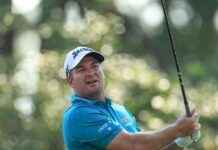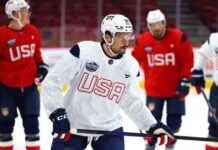The NHL Department of Player Safety has explained why they chose not to suspend Zach Whitecloud of the Vegas Golden Knights for a hit that injured Matthew Knies of the Toronto Maple Leafs during a game. In a video released by the department, they compared Whitecloud’s hit to two other hits that resulted in suspensions. The video clarified that for a violation of Rule 48, which covers illegal checks to the head, the head must be the main point of contact and the head contact must be avoidable.
The hit in question occurred during the second period of the game, where Whitecloud checked Knies with his skates leaving the ice on contact. Despite the controversy surrounding the hit, the on-ice officials determined that it did not warrant a major penalty. Whitecloud was given a minor penalty for roughing, while Simon Benoit of the Leafs received a double minor for roughing after going after Whitecloud.
The Player Safety video emphasized that Whitecloud’s hit was legal within the framework of Rule 48 because the head was not the main point of contact. They noted that Knies’s entire body absorbed the force of the check, indicating that the head contact was unavoidable. The department also praised Whitecloud for taking a good angle of approach and not excessively elevating to make head contact when he left his skates on contact.
Leafs coach Craig Berube provided an update on Knies, stating that he was being evaluated by team physicians but was feeling okay. He defended the legality of the hit by Whitecloud, calling it a clean hockey hit that has been a part of the game for a long time.
Knies, a 22-year-old player for the Leafs, has been a valuable contributor to the team’s offense with 12 points in 20 games. His injury comes at a challenging time for the Leafs, as they have been without Auston Matthews due to an undisclosed injury since November 11.
Overall, the NHL Department of Player Safety’s decision not to suspend Whitecloud for the hit on Knies has been met with mixed reactions. While some believe it was a legal hit within the rules of the game, others argue that more needs to be done to protect players from head injuries. The debate over hits like these will likely continue as the NHL seeks to balance physicality with player safety on the ice.


















